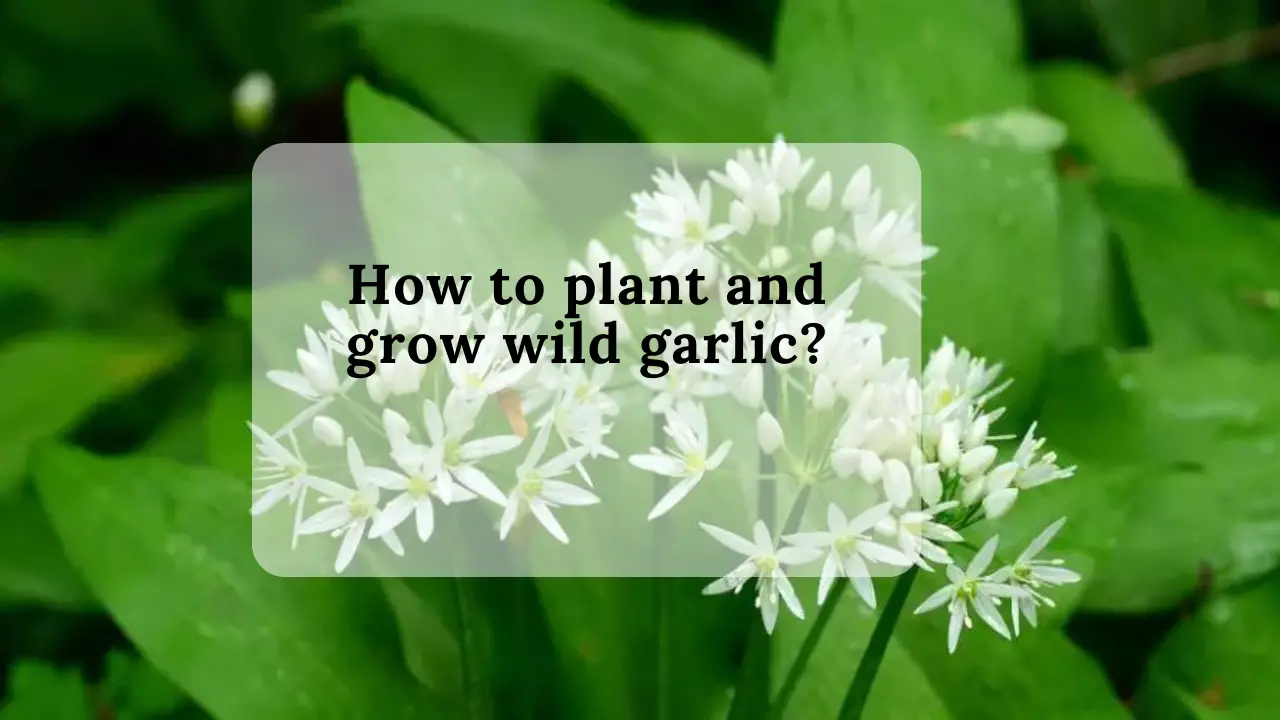Discover our tips for planting and growing wild garlic in your garden!
Wild garlic is a bulbous plant that is eaten from the bulb to the flowers. It gets its name from the fact that it is very popular with bears after their hibernation. Quickly discover our tips for planting and harvesting it in your garden!
How to plant and grow wild garlic?
The characteristics and origin of wild garlic
- Type: aromatic plant
- Height: up to 60 cm
- Flower color: white
- Desired exposure: semi-shaded
- Soil type: well drained, rich in humus
- Foliage: deciduous
- Maintenance: easy
- Sanitizer: no
- Diseases and pests: leek leaf miner fly
- Varieties: RAS
Wild garlic (Aillum ursinum) is part of the Liliaceae family . Native to Europe and Asia, this aromatic plant has nearly 700 species . Its primary origin is wild and grows in the undergrowth.
Its leaves closely resemble those of lily of the valley, which are toxic. So be careful if you want to harvest wild garlic from the wild. They can also be confused with those of colchicum or arum.
Wild garlic goes dormant during the summer season, only to reappear in spring. Wild garlic leaves emerge from the ground in April. In May, the loose umbels of star-shaped flowers become detached from the foliage.
After its discovery, wild garlic was cultivated in vegetable gardens in order to benefit from its different properties. It is also found in flowerbeds as an ornamental plant. Wild garlic bears this name because it is the bears’ favorite delicacy after their hibernation.
The different varieties of wild garlic
There are no varieties of wild garlic ; only the type species (aillum ursinum) is cultivated.

Planting wild garlic
Wild garlic appreciates semi-shaded or shaded places as well as cool soils, rather heavy and very rich in humus and leaf loam .
Prefer to plant wild garlic bulbs rather than seedlings; It’s much less laborious! Planting bulbs is done in fall or spring .
- If necessary, add a large amount of compost just before planting.
- Dig a hole, plant the bulbs at a depth of 6 to 8 cm , spacing them 20 cm in all directions. Then water in fine rain. Leave as is for the first year while ensuring that the soil remains cool.
- In the second year, you can, if you wish, harvest the first leaves.
- From the third year onwards, the harvests become generous, remove the excess plants.
Caring for wild garlic
Wild garlic does not require any special maintenance , other than regular watering with fine rain in case of drought. Mulch your plants in summer to keep the soil cool.
Be careful, wild garlic can quickly become invasive . Therefore cut the flowers to limit propagation by spontaneous sowing.
No special maintenance in winter. Wild garlic tolerates severe frosts.
The different uses of wild garlic
Aside from its use in cooking to enhance dishes and meats thanks to its powerful fragrance, wild garlic also has medicinal properties . As with common garlic, wild garlic has recognized benefits for cardiovascular diseases, it helps reduce blood pressure in the arteries.
Likewise, it has beneficial effects against certain viral diseases such as the flu, against intestinal worms, against gastric problems and diarrhea. Wild garlic was widely used by the Celts and the Germans during Antiquity.
Harvesting and storing wild garlic
The harvest of wild garlic becomes more generous from the third year after planting. It is possible to consume all the parts that make up wild garlic, both those found in the ground and the aerial parts. The best parts of wild garlic, however, remain the flowers and the young foliage. It is advisable to harvest wild garlic as you need it. Try as much as possible to harvest wild garlic before it flowers .
Wild garlic can be stored for several days in the refrigerator and freezer . So be sure to chop it beforehand. Wild garlic leaves can also be used in pesto , accompanied by olive oil and pine nuts.
Diseases and enemies of wild garlic
Wild garlic is a plant that is fairly resistant to diseases and pests that affect most Alliaceae. However, be careful of the leek miner fly : place an anti-insect veil over your plants to protect them.
Combine wild garlic well in the vegetable garden
Like other Alliaceae, wild garlic must be kept away from legumes in the vegetable garden.
Multiplication of wild garlic
It is possible to propagate wild garlic by sowing or dividing the bulbs .
Propagating wild garlic by division: To do this, start by harvesting a few plants which include a bulb, roots and foliage . You will then need to cut each bulb in half, lengthwise . Make sure that the two fragments thus obtained have roots. Immediately transplant the two new wild garlic plants into the ground, to a depth of approximately 5 cm. They should be spaced about fifteen centimeters apart. You will notice that the wild garlic plants grow back easily and quickly.

